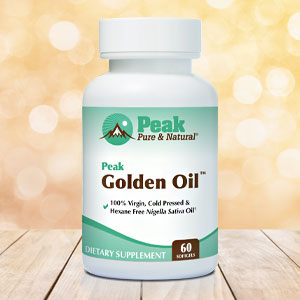The arrival of fall is a double-edged sword for me.
On one hand, that first day of crisp fall air absolutely thrills me…
But on the other hand, almost simultaneously, I begin waking every morning with dark circles under my eyes and raging congestion, followed by a nose that runs like a faucet.
Is it allergies, sinusitis, a cold or what?
In years past, I’d swear off the idea of allergies because I wasn’t sneezing and I didn’t have watery eyes. But after 50 years of it, something finally clicked… everyone doesn’t have the exact same allergy symptoms. And as far as seasonal allergies can go, fall takes the ticket by throwing everything but the kitchen sink at you — including mold!
This year, I’m ready. I’m armed with a full understanding of what’s attacking me — and how to tame it without feeling drugged up…
What the heck is stirring up your fall allergies?
I chose to write about my allergy issues (and how I’ve finally been able to relieve them) because so many other people are in the same boat right now. More than 24 million Americans suffer from seasonal allergies.
Sometimes the symptoms can be confusing because colds are usually making the rounds this time of year as well. However, colds are more apt to present with a runny nose, sore throat and possibly a fever.
If you experience a postnasal drip (which can lead to throat irritation), headache, watery or itchy eyes, ear congestion and mild fatigue, it’s a good bet you suffer from allergies.
But what’s causing it? Well, let me count the ways that fall socks it to us…
Allergic rhinitis: This is typically the culprit when people blame hay fever for their misery. But it’s more likely that your trigger is ragweed — not hay. This plant and its irritants start in mid-August and can wreak havoc until the first freeze.
Lingering warm weather: If unseasonably warm days stick around longer than usual, rhinitis symptoms can last longer, too. And when those warm days include high humidity, you can blame mold spores for that horrible headache. Even a dry, windy day can help circulate these irritants.
Leaves, leaves everywhere: Aren’t the colorful fall leaves just beautiful? Yes, until they fall. First, they can trap moisture… and that means mold. Then, when we start raking, we’re stirring up that mold and agitating pollen. Yikes!
These are just a few of the things causing seasonal allergies… now let’s talk about what you can do to feel better through them…
My first fall free of allergy symptoms
I stopped reaching for prescription and over-the-counter antihistamines a couple of years ago. Once I learned that most of the active ingredients in them were anticholinergic drugs, I cleared out my medicine cabinet.
That’s because anticholinergics (like diphenhydramine, found in products like Benadryl and Nytol) block the neurotransmitter acetylcholine, which is critical to memory function. My colleague Joyce Holman has written about about how anticholinergics can put people at higher risk for developing mild cognitive impairment (MCI), and ultimately, Alzheimer’s disease.
My close family history of Alzheimer’s is too high for me to take that risk. Instead, as with most things health-related, I’ve chosen a natural route to get relief, starting with the golden oil of the Nigella sativa plant’s black seeds.
Black seed oil, as it’s more commonly known around the globe, was found to be an effective treatment for symptoms of allergic rhinitis when you want to avoid the effects of other allergy drugs. In a study of 66 patients, symptoms including nasal congestion, nasal itching, runny nose and sneezing were relieved during the first two weeks of taking it.
Last fall was my first year to try it. It was such a relief to wake every day without having to immediately grab a tissue and run for the medicine cabinet. Instead, before bed each night I took a supplement that contained the cold-pressed golden oil, then one with breakfast the next morning. I’ve never felt better, and it was probably the first fall I lived through without feeling like I was in a medicated fog.
Other natural allergy symptom relievers
If the natural world can throw allergens at us, is it surprising that the answer to taming those allergens can be found in nature as well? If anyone understands the concept of balance, it’s Mother Nature.
Here are a few more remedies to help make fall your favorite allergy-free season of the year…
Bromelain is an enzyme found in pineapples that helps thin mucus and alleviate swelling in the nose and sinuses. Even though I eat some pineapple every day, to get enough to help with allergies you’d need to supplement. Avoid if you’re on antibiotics, and talk to your doctor about it if you’re on blood thinners.
Quercetin, found in apples, red grapes, onions and teas is a natural decongestant, antihistamine and antioxidant that can stop the release of histamines by your body’s immune system. Supplementing would provide enough to help with allergy symptoms.
Eucalyptus not only smells great but if used in a vaporizer it can really open your sinus passages. You can even add a few drops to a small pot of boiled water and breath in the warm steam, carefully.
Sources:
Allergy Facts — American College of Allergy, Asthma & Immunology
Four Things You Might Not Know About Fall Allergies — American College of Allergy, Asthma & Immunology
Herbal treatment of allergic rhinitis: the use of Nigella sativa — The American Journal of Otolaryngology
Natural Remedies for Grass and Ragweed Allergies — Midwest Allergy Relief
Read full article here



